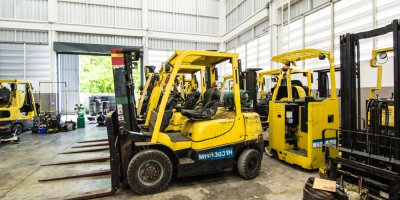
Looking to digitally transform your supply chain? Use AI. Source: Shutterstock
Forrester Principal Analyst on how AI can help supply chains
SUPPLY CHAINS, in its simplest form, help businesses purchase, produce, and distribute goods to customers. The more efficient, streamlined, and optimized the supply chain, the better it is for the business.
In the digital age, several technologies can help businesses get started with digitizing the supply chain. Many companies in the APAC are already exploring specific use cases built on blockchain and the internet of things (IoT).
However, Forrester Principal Analyst and VP George Lawrie believes that there is strong interest in the market about the possible use cases of artificial intelligence (AI) in the supply chain space. It’s what the subject matter expert fields questions about most frequently.
From experience, Lawries shares in his blogpost, that the major applications of AI in supply chains are in demand management, warehouse execution, and chatbots serving procurement professionals. Let’s delve deeper into each of these to better understand the possible role of AI:
# 1 | Demand management
AI can help businesses use data to gain valuable insights about future demand, and then tailor their operations to meet that demand ahead of schedule.
Retailers, especially in the fast-paced digital world, seem to have perfected this technology in order to deliver groceries and products to customers faster than ever before.
Amazon, Walmart, and Target, for example, use AI in new and interesting ways to forecast demand and manage inventory to not only optimize their supply chain but also delight customers and deliver more value to them.
IMD Operations Management Professor Ralf Seifert, however, believes that using AI in the warehouse for demand forecasting sounds great theoretically but will take a lot of effort to implement as most companies don’t have the data necessary to feed and train their AI models on.
With a little help from data scientists willing to sort through historical data in excel spreadsheets and other formats and platforms, however, the obstacle highlighted by Seifer can be overcome, setting organizations on the right track with AI.
# 2 | Warehouse execution
Lawrie’s blogpost talks about the use of computer-vision powered autonomous robots that support warehouse staff with picking, moving, and loading goods in a way that’s automated and more efficient.
In Asia, companies such as Alibaba and Cainiao have perfected the use of AI in terms of warehouse execution and have many things to teach companies looking to leverage the technology for automated warehouse operations.
Tech Wire Asia recently spoke to Cainiao CTO Xuemei Gu who said that the company sees its advancements in the use of AI and IoT as a way to not only serve itself but also peer-group companies in China.
# 3 | Chatbots serving procurement professionals
Chatbots are quite effective when it comes to helping businesses find their feet with AI. It’s a simple deployment that is affordable, quick, and provides immediate results.
In the supply chain space, chatbots can have many uses. Some of the simple ones include helping customers track orders and allowing staff to make inquiries into inventory split across different warehouses.
However, Lawrie recommends the use of some of the more advanced AI-powered chatbots that not only provide customers with a delightful experience but also integrate with other business applications to make the organization’s digital footprint more seamless.
One example the Forrester Principal Analyst discusses is the use of a chatbot to generate purchase orders automatically based on the organizations’ configure price quote (CPQ) system — although the opportunities with chatbots in the supply chain space are truly unlimited if businesses are willing to get creative.
READ MORE
- Strategies for Democratizing GenAI
- The criticality of endpoint management in cybersecurity and operations
- Ethical AI: The renewed importance of safeguarding data and customer privacy in Generative AI applications
- How Japan balances AI-driven opportunities with cybersecurity needs
- Deploying SASE: Benchmarking your approach




